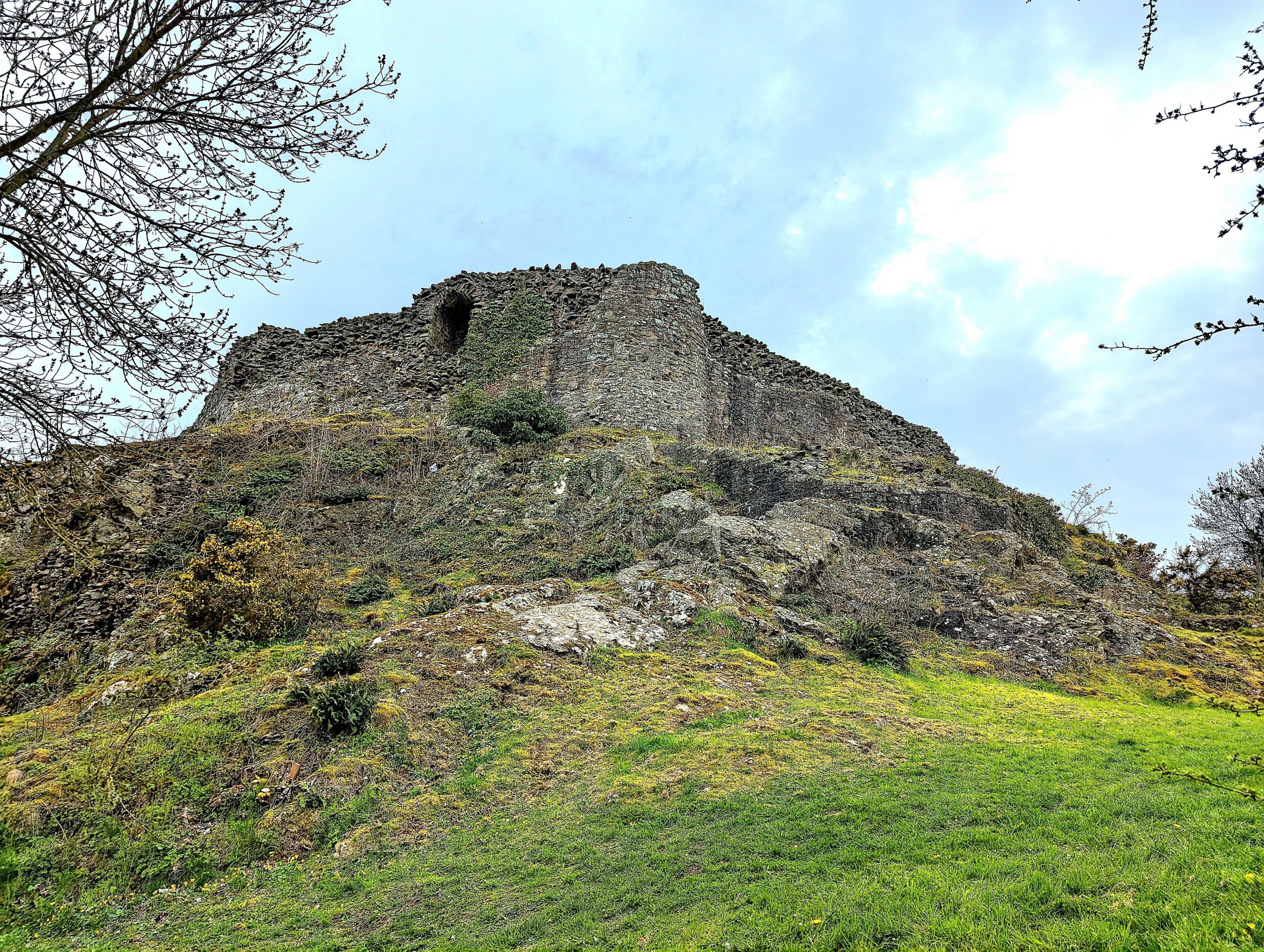Montgomery Castle is situated in Powys, Wales and built on top of a steep crag which gives the castle’s location spectacular views of the Georgian town of Montgomery and nearby countryside. The stone castle was built in 1223 replacing an earlier timber structure, in times of strife between the English and Welsh along the Welsh Marches. Montgomery Castle has seen its fair share of action and the ruins that remain are dramatically striking.
| Built | 13th Century |
| Type | Norman Castle |
| Condition | Ruinous – Major Stonework Intact |
| Ownership | Cadw |
| Access | Public – Admission Free |
| Postcode | SY15 6QY |
Click here to watch our video exploring Montgomery Castle and discover its history
Building Montgomery Castle
The original castle built in the area was known as ‘Hen Domen’, constructed between 1071-1074 by Roger de Montgomery, Earl of Shrewsbury and a powerful Marcher lord who was responsible for many of the castles in the Welsh Marches (Ludlow Castle is another impressive castle that he held). The original castle was a motte and bailey fortification, featuring a substantial earthen mound (known as the motte with a timber keep at the top ) and a surrounding courtyard area (the bailey) enclosed by a wooden palisade.
In 1093 the castle was captured by the Welsh and held for a number of years, it is believed that Hen Domen was destroyed by Prince Llywelyn ab Iorwerth in 1214.
After a number of Welsh-English clashes in 1223, the young King Henry III of England took the lordship of Montgomery into crown possession. The reconstruction of Montgomery Castle using stone began in late summer 1223. The new castle was built a mile southeast of the original site, and the architect responsible for its design was Hubert de Burgh, who also oversaw the reconstruction of Skenfrith Castle, Grosmont Castle, and White Castle in the Welsh Marches.
The masons worked tirelessly from 1223 to 1228 to construct the entire inner ward, known as the donjon, on a large rock above the town of Montgomery. The new castle included a gatehouse, two D-shaped towers, and apartments were situated around the inner ward’s curtain wall.
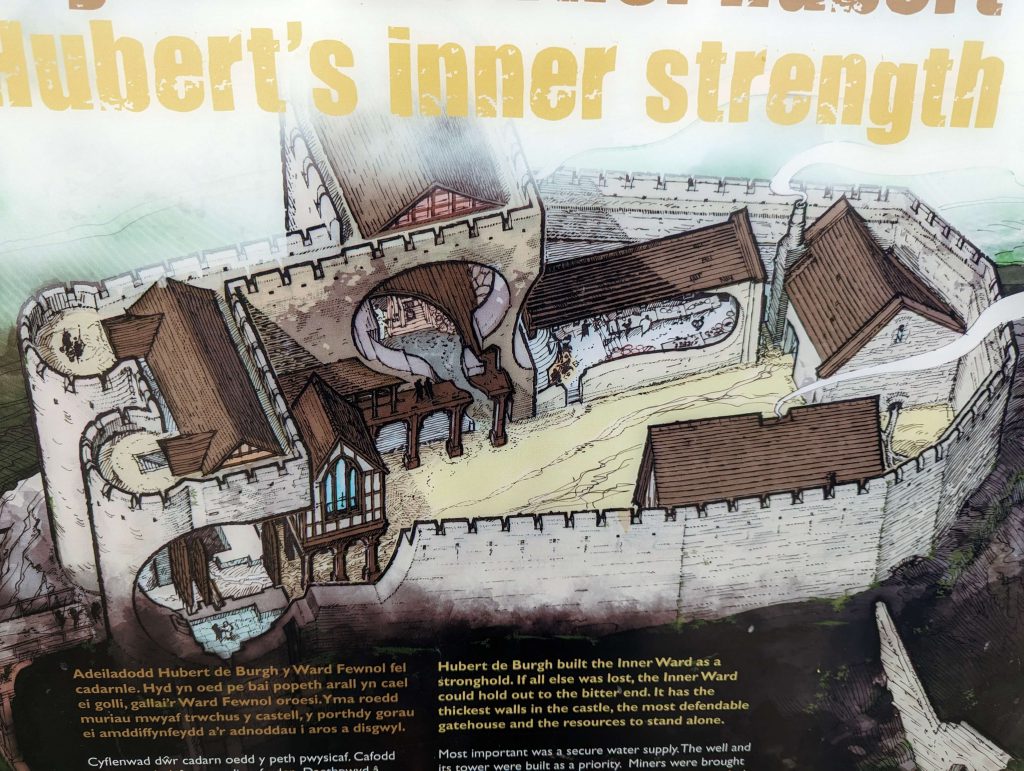

Welsh Border Battles – Llywelyn the Great vs Henry III
Following an unsuccessful attack by Prince Llywelyn ab Iorwerth (Llywelyn the Great) in 1228 extra defences were put in place. A middle ward, a gatehouse with two round towers to defend the bridge from the middle to the inner ward and a ditch to the south were added. Further on another curtain wall was put on the outer ward.
In 1228, Henry bestowed the Lordship of Montgomery and the castle on Hubert de Burgh, Earl of Kent and Henry’s Chief Judiciar. Hubert initiated the clearing of the forested land southwest of the castle, thereby opening up the entirely Welsh area of Kerry. Llywelyn dispatched his most influential envoy, Princess Joan, his wife and half-sister to Henry. A brief truce ensued, but its duration was short-lived. Soon after, the marcher lords initiated advances into Kerry, prompting Hubert to commence the construction of a new castle in the region as a base for further invasion. With Llywelyn receiving fierce support from his Welsh forces and utilising his expert knowledge of the terrain, the invaders found themselves in a hasty retreat.
William de Breose, the lord of Builth, was captured and imprisoned by Llywelyn until a ransom of £2000 was agreed, the same amount that Llewelyn agreed to pay as compensation for the destruction of Hubert’s half built castle.
A tragic turn in this tale befell William de Breose. At the time of his captivity by Llywelyn, William was an attractive and fit twenty-seven-year-old. Llewelyn’s wife, Joan was forty years old with a loyal but absent husband. The pair formed a connection that evolved into a love affair. This bond persisted even after William’s release from imprisonment when he visited as a guest in Llywelyn’s household.
This tale was destined for a tragic conclusion. Once Llywelyn discovered the affair, he promptly had William hanged. England, accepting this as justice, made no attempt to avenge his death. In comparison, Joan received a milder punishment; she was kept in close confinement for a year. Following this period, Llywelyn and Joan were reconciled.

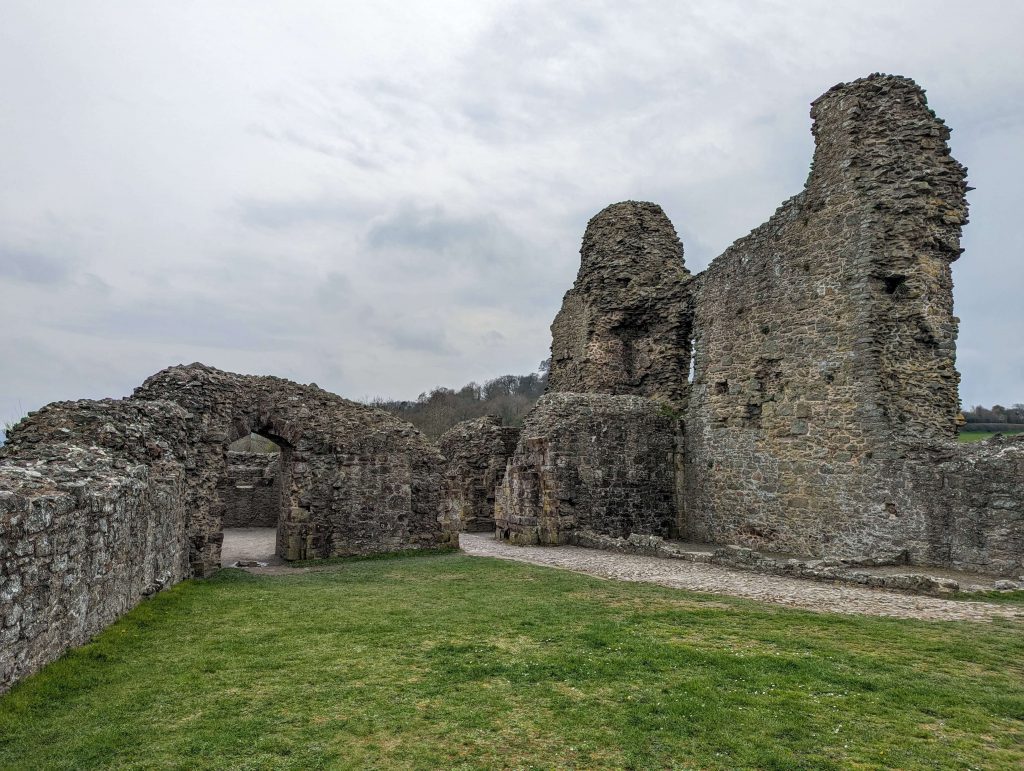
In 1231, further conflict arose as Llywelyn became increasingly concerned about the growing power of Hubert de Burgh. Some of Llywelyn’s men were captured by the garrison of Montgomery and subsequently beheaded. In retaliation, Llywelyn ordered the burning of Montgomery, Powys, New Radnor, Hay, and Brecon. He then turned west to seize the castles of Neath and Kidwelly. Negotiations unfolded throughout 1232, leading to Hubert’s removal from office and subsequent imprisonment. The Peace of Middle, agreed upon on 21 June, was renewed annually for the remainder of Llywelyn’s reign.
Welsh Border Battles – Llywelyn the Last vs Edward I
In 1267, Henry III held a meeting with Llywelyn ap Gruffudd at Montgomery Castle, leading to the negotiation of the Treaty of Montgomery. This treaty conferred upon Llywelyn the title of Prince of Wales. Shortly thereafter, Gruffudd constructed Dolforwyn Castle merely 6 miles away from Montgomery, encroaching on Henry’s territory and infuriating him.
In 1276 the First War of Welsh Independence broke out which ended with Gruffudd being defeated. Following this though, Edward I took no chances and secured Montgomery Castle with improvements to the walls, a new great hall and supplementary buildings. In 1282, the Second War of Welsh Independence erupted, and in December of that year, the Montgomery Army marched to Builth Wells for a surprise attack on Gruffudd, ultimately resulting in his death.
The castle now saw a more peaceful period, until in 1402 Owain Glyndwr and his Welsh forces attacked and burned Montgomery. The castle prevailed again but the town was left in ruin and remained in that state for two centuries.
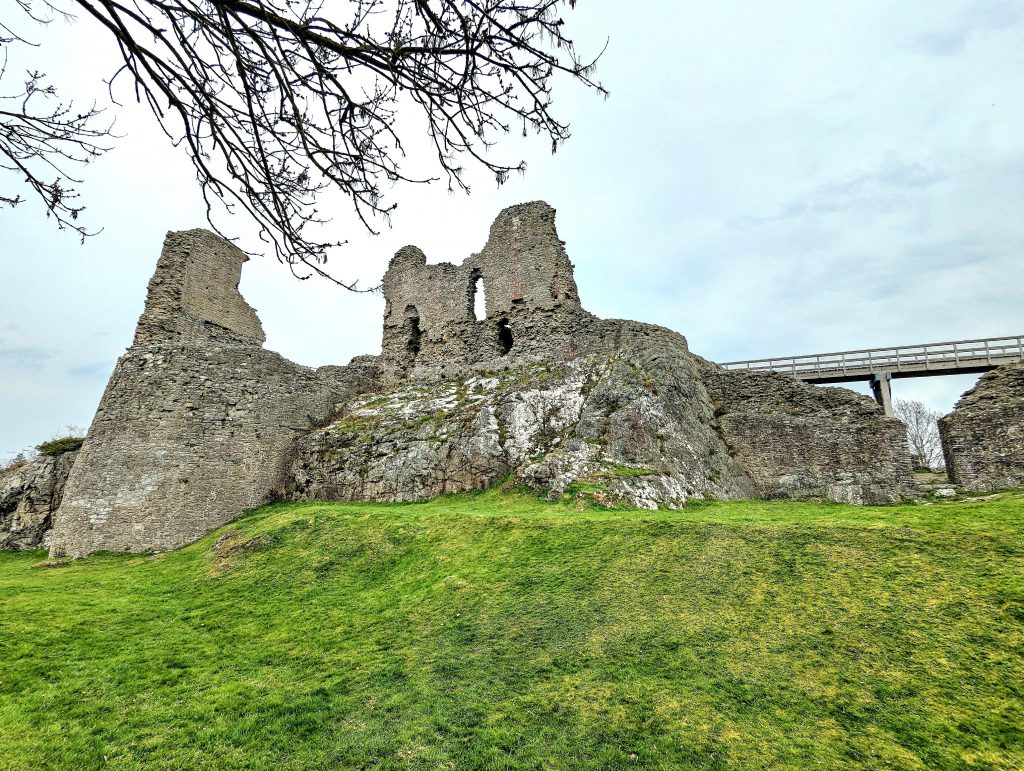
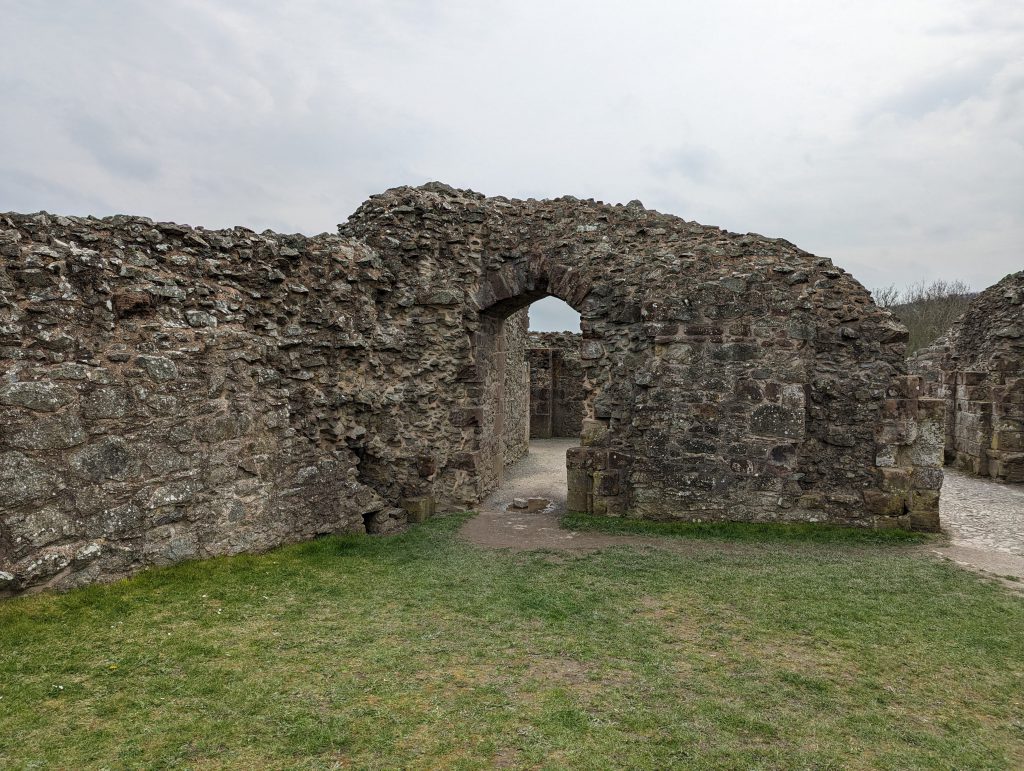
Quieter Times
Following this period the castle had much less military importance and slowly fell into disrepair. It did briefly serve as an administrative centre for the Council of the Marches in 1534 and the interior was refurbished accordingly. By the end of the 1500’s the castle was deserted again until 1622, when Sir Edward Herbert built a timber mansion within the outer ward.
Civil War
When the English Civil War (1642–1651) broke out, Montgomery Castle was still owned by the Royalist Edward Herbert (1st Baron Herbert of Chirbury), but as he was now a man in his sixties he did not wish to get involved. Unfortunately Parliamentarians decided differently and thought Montgomery Castle would be a strategically advantageous castle to capture to control central Wales. A Parliamentary army of 800 troops headed to Montgomery, Edward surrendered without a fight.
Montgomery Castle was a painful loss to the Royalists and not one they took lightly. The Royalists rallied up a large army to recapture the castle, but the Parliamentarians were not going to let it go without a fight, the Battle of Montgomery proceeded on 18 September 1644. The Parliamentarians were victorious and held on to the castle for the remainder of the war.

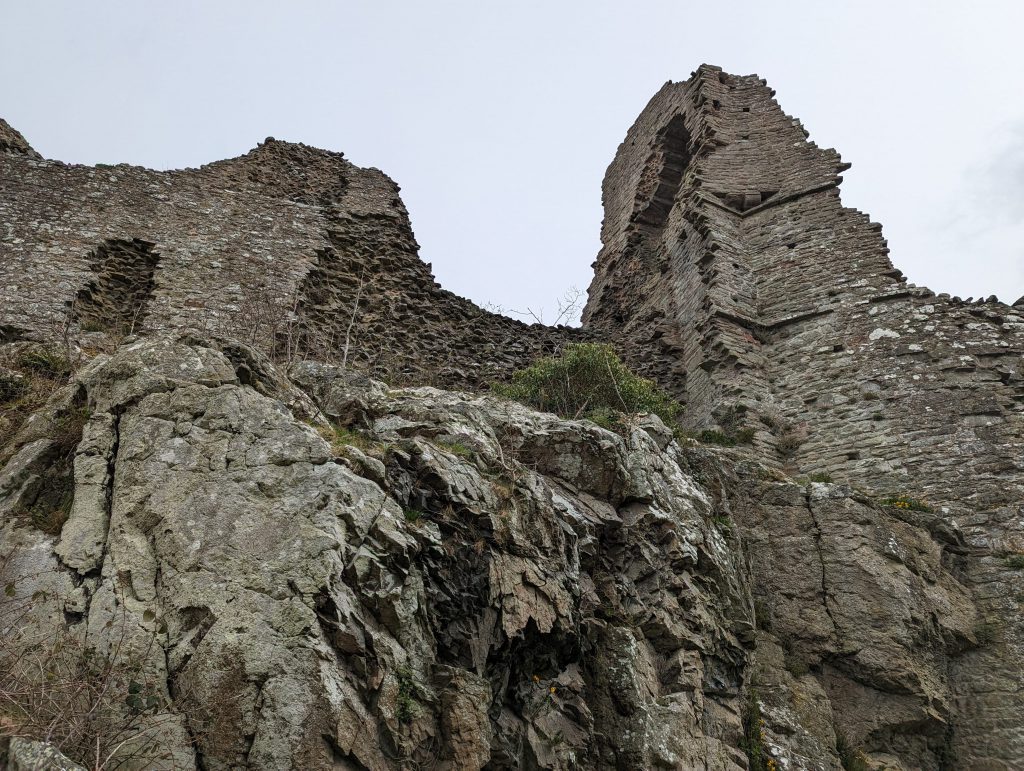
Following the end of the English Civil War, Parliament ordered the castle to be slighted (destroyed). Edward’s son, Richard Herbert pleaded for the castle not to be slighted but it went ahead anyway.
Modern Times
Montgomery Castle ruins are quite substantial and open to the public free of charge to visit. In the town of Montgomery next to the castle, you can find The Old Bell Museum with a permanent exhibition about the castle.
Despite its impressive ruins and extensive history, it is puzzling that Montgomery Castle is not more widely recognised. The town of Montgomery, with its charming market square and many well-preserved timber-framed buildings, is a delightful place to visit and is conveniently situated just a short, albeit steep, walk away from the castle.

